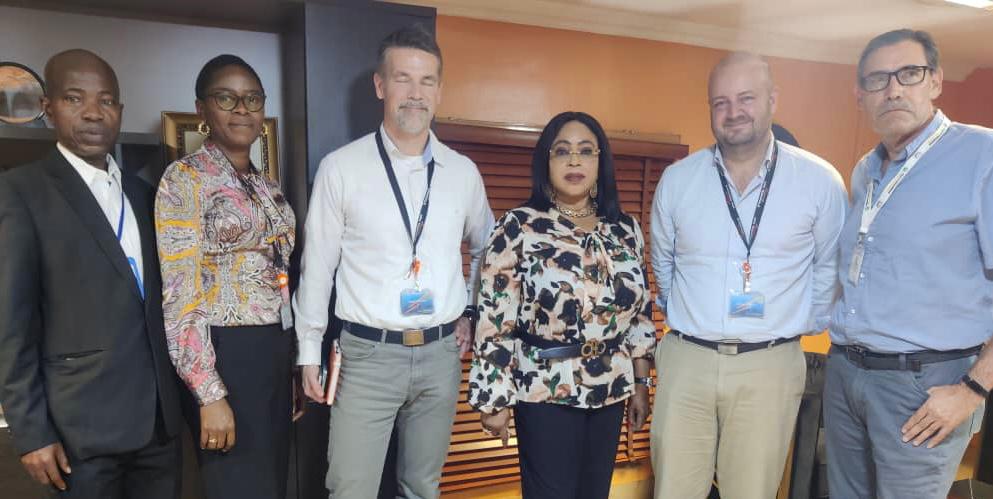
The Chairman, Seaports Terminal Operators Association of Nigeria (STOAN), Princess Vicky Haastrup said the Federal Government’s port concession programme has saved the country about US$8.5 billion (N3.91 trillion) which was hitherto paid to foreign shipping lines as congestion surcharge.
The STOAN Chairman also said that members of the association, who are the concessionaires, are ready to inject more funds into the port once pending concession agreements are renewed.
Haastrup said these last week while addressing journalists after a courtesy visit to her by the new Country Managing Director of APM Terminals Nigeria, Frederik Klinke.
She said in addition to the huge savings to the economy, terminal operators have also made significant investments running into billions of dollars at the six major seaports across the country.
“Nigeria’s port concession programme has been a monumental success. Many African countries send representatives here to understudy our port concession regime and how we were able to substantially increase investment and efficiency within a very short period of time. It shows the can-do spirit of Nigerians.
“The port concession programme reduced the waiting time of vessels coming into our ports from an average of 45 days before 2006 to less than three days at present. It has helped in eliminating the notorious congestion surcharge hitherto imposed on our ports by major shipping lines under the aegis of the Europe-West Africa Trade Agreement EWATA.
“The elimination of the port congestion surcharge has resulted in saving Nigeria’s trading community over US$500 million per annum. If you multiply that by the 17 years of port concession, that amounts to a savings of US$8.5 billion to date. In naira terms, that is a savings of more than N3.9 trillion to the Nigerian economy,” she said.
The STOAN Chairman said port concession has also led to the injection of private capital into port development; which has helped to free up government resources for other developmental purposes, eliminated port congestion and led to the modernisation of the country’s seaports.
Others benefits of port concession, according to her, include improved availability of cargo handling equipment, increased competition among terminal operators, improved welfare and training of port workers and the institution of a condition of service for dockworkers.
Haastrup said prior to the port concession regime, dockworkers were treated as casual workers without employers and condition of service.
“This narrative has since changed with the introduction of the Collective Bargaining Agreement (CBA) through which we have created a condition of service for them and also created room for review of their remuneration every two years,” she said.
Haastrup urged the Federal Government to speed up the process of port concession renewals to enable terminal operators inject fresh funds into the port to further boost the competitiveness of Nigerian ports.
“We are competing with other seaports in the sub-region so we cannot afford to stop investing. I believe that once the new port concession agreements are signed, terminal operators will readily inject more funds into the system to enhance the competitiveness of our ports. The more we inject private capital into the port, the more we’ll attract more business and create more jobs for Nigerians,” she said.
The Country Managing Director of APM Terminals Nigeria, Frederik Klinke, said his company has a long-term commitment to Nigeria.
He assured that APM Terminals will continue to set new standards for port operation in the country and support the Federal Government’s drive to diversify the economy through the promotion of non-oil export.
He also assured the STOAN Chairman that APM Terminals will cooperate with the association to enhance and improve the efficiency of the nation’s seaports.
Klinke was accompanied on the visit by the Terminal Manager, APM Terminals Apapa, Steen Knudsen and the General Manager, Legal and Corporate Affairs, APM Terminals Nigeria, Chinenye Miriam Deinde.
Copyright Ships & Ports Ltd. Permission to use quotations from this article is granted subject to appropriate credit given to www.shipsandports.com.ng as the source.